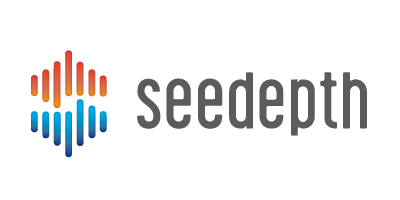PR measurement is all the rage now. Suddenly agencies are touting it publicly, traditional media monitoring companies are shouting it from the roof tops, and numerous startups focused on PR automation are claiming to measure “PR ROI.” It’s a hot topic, especially given the Barcelona Principles and their growing adoption. Suddenly, the industry is waking up to the importance of better measurement, and everyone in PR seems to want a piece of the pie. Choosing a solution to meet your needs can be as confusing as choosing the right PR agency. But there are discrepancies in the way measurement is interpreted throughout the industry, and measurement does not necessarily mean analytics. For example, many people use “measurement” to describe quantitative measurements only, such as counting of media clips. That certainly is a measurement – but it’s not an analysis.
At SeeDepth, we believe measurement is evolving and should include analytics that help you repeat what’s working and pivot from what isn’t. Simply counting and reporting outputs isn’t enough. Analyzing outcomes and understanding patterns of success is crucial to ongoing success in the rapidly changing PR industry.
Of course today, marketing and PR professionals are bombarded by vendor pitches, and agency clients aren’t sure why they might need additional measurement solutions when they already have an agency to report on activity (again, keep in mind quantitative vs qualitative; measurement vs analysis; and biased vs unbiased reporting). Today, we break down of some of the different types of offerings and who might want to use them.
As always, before you begin a search, determine your goals. Are you trying to increase your team’s efficiencies (time, focus), improve PR outcomes (vs outputs), prove bottom line value of PR or its ability to fill the top of the funnel, etc. Many different types of solutions use “measurement” as their moniker – but you’ve got to know what you need to measure – and analyze or change - in order to choose the best tool for your specific needs.
PR Automation
There are several vendors who focus on helping PR teams automate some of their processes, similar to marketing automation tools. For example, automating and tracking media pitches to save time and identify which ones result in the best return rate, or making it easier to share media pitches among the team for faster execution. (Please be aware of automated pitching, however – we don’t recommend it!) This type of measurement is typically focused on tracking activities to maximize a PR Professional’s time, not necessarily analyzing outcomes that help create stronger PR strategies. These types of tools are useful to agencies with multiple teams who can learn from the efforts of other teams, emulate winning strategies and share insights for more targeted results.
Media and Social Media Monitoring
Traditional media monitoring tools were built for the sole purpose of capturing any media coverage on your company and telling you where and when it happened. Social media monitoring tools were built for the same purpose within social channels. With the rising demand for analytics, these companies have thus begun to tout deeper measurement analysis on such coverage and mentions, yet they very often still focus only on possibilities instead of outcomes. Circulation, impressions and Ad Value Equivalencies are typical in media, while fans, followers and likes typical in social media monitoring. None of these numbers really measure results, rather focus on what could have happened. Simply because you’re covered in a publication doesn’t mean that every reader saw your article. You can have thousands of fake followers or inappropriate fans (just try Facebook’s advertising!), which means it’s possible that all of them see and engage with your brand. But counting circulation or Twitter followers isn’t a solid measurement. Yet, these monitoring tools can be good for tracking everywhere someone has talked about your brand, and some analysis does help identify attributes such as what regions your brand is being covered, types of media most likely to cover your brand, sentiment and share of voice. Larger brands tend to benefit from full media monitoring tools because they want to know about every media pickup. (At SeeDepth, we tend to focus on the strategic coverage – that in which you planned and desire to be covered.)
PR Analytics
The newest kid on the block is the sector of PR Analytics companies. These can range from services to automated tools like SeeDepth. Analytics companies also help you to monitor what’s happened, but they tend to dive deeper into results, using data to identify patterns of success. At SeeDepth, we focus on using such data and analytics to help brands repeat what’s working and pivot from what isn’t. Analytics offerings don’t just capture output (such as how many pitches your team sent out), and don’t just capture outcomes (how many articles did we receive and where were we covered), but dive deeper into the effect those outcomes had on your business, and what patterns of success resulted in the best outcomes. Analytics break down your PR programs to show you which ones are returning the most value (based on benefit and budget – ROI) and what strategic formulas deliver the best results. Results of course, depend on your goals – are they aligned? Analytics expand your insights and go much deeper beyond typical “measurement” and therefore create stronger PR strategies and programs.
We’ve found that today, many companies are opting for a mix of the above. We expect the industry will therefore see some interesting M&A activity in the years to come. But for now, identify your PR goals, and think about which measurement category will really help you to not just track activity, but maximize results, execute stronger strategies and truly understand what success looks like – and how to repeat it – for your business.

